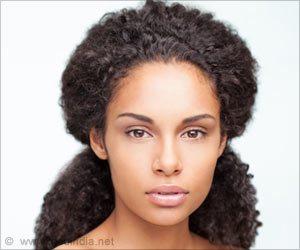What is Facelift / Rhytidectomy?
Facelift is a commonly performed cosmetic surgery procedure that is done to remove signs of aging from the face and neck and giving the face a youthful appearance. Th surgical term for the procedure is called Rhytidectomy and it comes from the ancient Greek words - rhytis (wrinkle) and ektome (excision). It literally means surgical removal of wrinkles. In this procedure, the skin of the face is surgically lifted and tightened, sometimes along with tightening of the underlying tissues.
Coloring of grey hair to black is a common way to knock off a few years from a person’s appearance, however it is the wrinkles on the face and the sagging skin of the neck that needs correction to look young. Surgery to correct such age-related changes of the face was previously restricted to the celebrities and movie stars, but today it is much more popular for an older person to have a facelift.
It must be remembered that no surgical technique will bring back the old youthful appearance of your face. Therefore, if you plan to undergo the surgery, keep your expectations realistic before going in for the procedure.

How Does the Face Change with Age?
As the person ages, several changes take place in the facial skin and underlying tissues. These include:
- Lines of worry on forehead and Outer angle of Eyes – The skin becomes thin and fragile, loses its elasticity, and develops dark spots
- The underlying muscles contract producing wrinkles which appear as transverse forehead lines or worry lines, glabellar frown lines (deep lines that appear in the forehead just above the nose), crow’s feet at the outer angle of the eye, and marionette lines at the outer angles of the lips.
- Hollowing at the temples - occur due to loss of underlying fat. Along with this there is also hollowing of lateral and central cheeks, and sunken eyeballs
- Deepening of the folds around nose and from the lips deepen - Sagging of superficial fat occurs, which is caught by retaining ligaments that connect the superficial and deeper structures, thus aggravating folds. The nasojugular fold, along which tears flow, and nasolabial fold deepen and festoons (swollen mounds on the upper cheek) appear.
- Skin sags on the lower jaw forming jowls - The changes in the skin and underlying fat and ligaments result in the formation of jowls and the skin sags on the lower jaw.
- Eye bags and Double Chin - Age-related changes also occur in the muscles of the eyes and neck. The orbicularis oculi muscles around the eyes and the platysma in the neck are affected. This results in the eye bags below the eyes. Changes in the neck results in sagging, double chin and neck fullness.
- Sunken and deepening of the eye sockets - Age-related changes also occur in the bone of the skull. The lower rim of the eye socket may get resorbed resulting in widening of the eye socket.
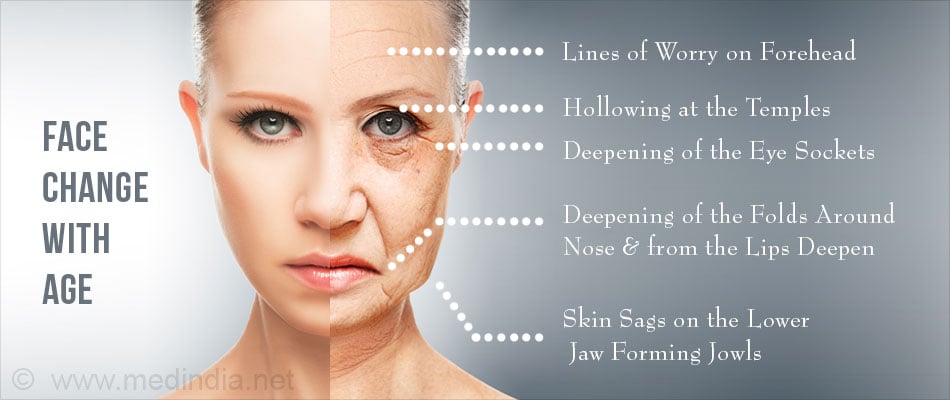
What are the Different Types of Facelifts / Rhytidectomy Procedures?
There are different types of facelifts depending on the extent of the procedure. These include:
- Classical subcutaneous facelift: Though this is the simplest type of facelift, the effects may not last for long. It is preferred in those with wrinkles rather than sagging of deeper tissues. In this procedure, the skin is separated from the underlying tissue and lifted up and tightened.
- SMAS facelift: In this procedure, the superficial muscular aponeurotic system (SMAS) is also lifted along with the skin. The SMAS is the superficial tissue below the skin in the face and neck. The effects last longer than a classical subcutaneous facelift. Types of SMAS facelift include:
- SMAS plication: where the SMAS tissue is tightened with stitches
- Minimal access cranial suspension lift: Where a loop suture is passed through multiple points of the SMAS and the platysma, which are gathered and then sutured to a point above the cheek bone
- Lateral SMASectomy: In this procedure, the outer part of the SMAS is cut off
- Extended SMAS lift: In this procedure, the skin flap and the SMAS are lifted separately and fixed in different vectors.
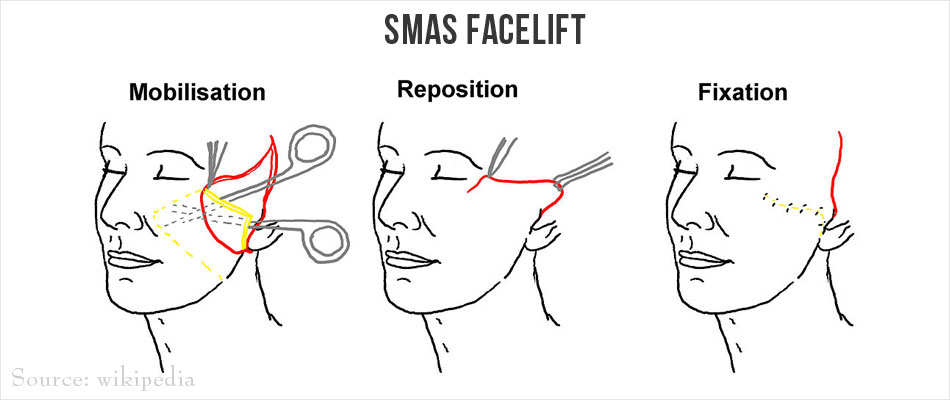
- Composite facelift: In the composite facelift, the skin, subcutaneous fat and the SMAS are lifted together as a single unit.
- Subperiosteal facelift: In this procedure, the facelift is carried out in a deep plane close to the bone
- Modified double plane facelift: In this procedure, a subcutaneous as well as a subperiosteal dissection is carried out. It is often done with the help of an endoscope
In some patients, a neck lift or a forehead lift procedure may also be carried out along with the face lift.
What is the Preparation Required Before a Facelift Surgery / Rhytidectomy?
When you visit your cosmetic surgeon, your doctor will examine your face carefully. They will advise you on the likely changes that will be brought about by the surgery and set realistic expectations. Your doctor will also check the function of the facial nerve, the nerve that supplies to the face.
Photographs will be taken in various views before and a few weeks after the surgery to demonstrate the changes brought about by the surgery.
A general examination will also be carried out. The surgery will usually not be done if you have uncontrolled hypertension, which can cause bleeding and interfere with the healing. If you are a smoker, you will be warned that smoking can interfere with the healing process, and you will be advised to stop smoking at least for few weeks prior to surgery. Blood thinners should be avoided for two weeks prior to the surgery to avoid excessive bleeding
Routine tests which are done before any surgery will be done prior to a facelift procedure as well. These include:
- Blood tests like hemoglobin levels, blood group, and liver and kidney function tests
- Urine tests
- ECG to study the electrical activity of the heart
- Chest x-ray
In older patients, a detailed assessment of the heart may be required to make sure that they are fit for surgery.
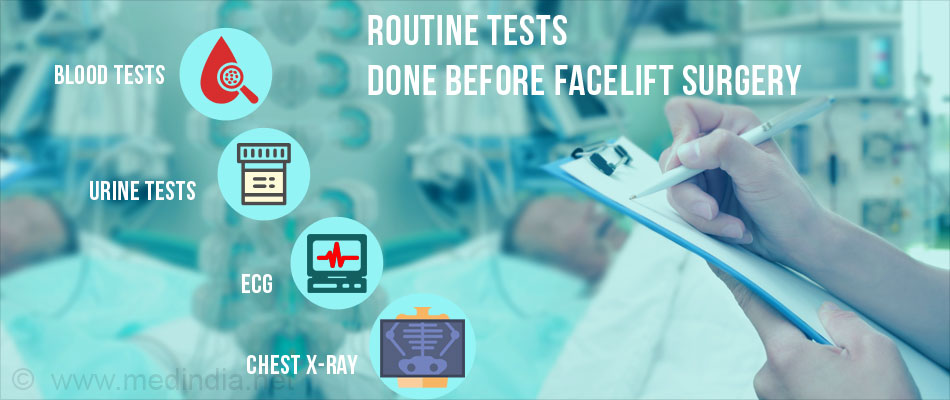
What is the Procedure Followed for a Facelift / Rhytidectomy Surgery?
Type of Anesthesia – The rhytidectomy procedure can be done under local anesthesia with sedation, or general anesthesia. If you are under general anesthesia, you will be asleep during the procedure and will not be aware of what is going on. For local anesthesia, the anesthetic is mixed with epinephrine to reduce bleeding from the incision.
The local anesthetic with epinephrine is give even if the procedure is being done under general anesthesia.
Pre-operative Check-up – Routine tests as indicated above are ordered a few days before the surgery.
Fasting before surgery - Overnight fasting is required and occasionally intravenous fluid maybe required to keep you well hydrated. Sedation is sometimes required for good overnight sleep before the surgery.
Shift from the ward or room to the waiting area in the operating room - An hour or two before the surgery, you will be shifted to the operating room waiting area on a trolley.
Once the surgical room is ready, you will be shifted to the operating room.
Shift to the Operating room - The ambience in the operating room can sometimes be very stressful and a small amount of sedation can help overcome your anxiety. From the trolley, you will be shifted on to the operating table.
As you look up, you will see the operating light console and at the head end will be the anesthesia machine. There may also be monitors to check oxygen levels, ECG and other vital parameters. A constant beeping sound may be present from the monitors, which may sometimes be irritating.
Anesthesia before surgery - If you have to undergo general anesthesia, the anesthetist will inject drugs through an intravenous line and make you inhale some anesthetic gases through a mask that will put you in deep sleep.
Once you are in deep sleep, a tube will be inserted into your mouth and windpipe to administer the anesthesia gases to overcome pain and keep you comfortable. The local anesthetic is injected in the region where the incision will be taken.
Surgical procedure: Because facelift is a cosmetic surgery, it is very important that the skin incision should not be at a visible site and is hidden by hair or the contours of the ear. The incision usually extends from the temple to the base of the sideburn, the front of the ear, and then below and behind the ear. It may be further extended along the lower hair line.
The plane of dissection and the tightening of the SMAS layer and other structures depend on the type of facelift that the patient is undergoing. A deeper surgery requires more care to prevent damage to nerves and blood vessels. Once the procedure is complete, the excess skin is excised, the skin flap is pulled upward and outward, and the incision is stitched with minimal tension. A light dressing and a drainage tube may be placed on the wound.
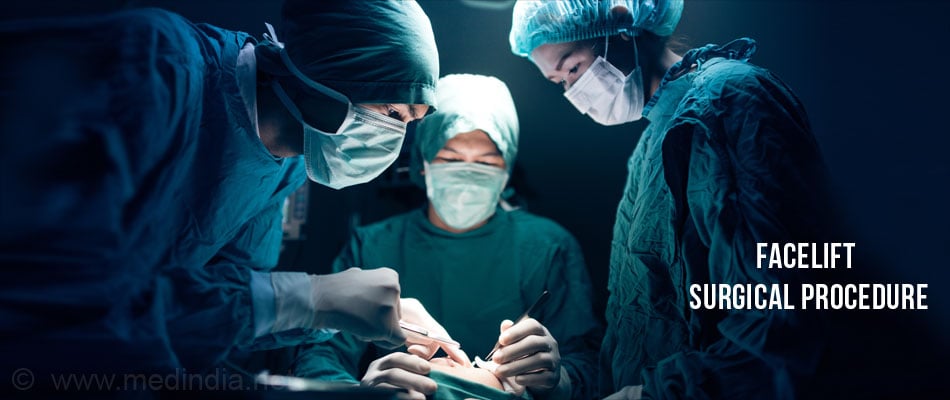
A neck lift if necessary is usually done before the facelift procedure. The incision for the neck lift is often taken vertically in the center in the front of the neck. The excess platysma muscle may be removed and the muscles are brought closer to the midline.
For a forehead lift or brow lift, the incision is taken close to the hairline.
What are the Other Procedures Used to Complement a Facelift / Rhytidectomy Procedure?
A facelift may not be able to address all the age-related changes of the face and the patient may require additional procedures to bring about a completely youthful appearance. Some procedures that are used to complement a facelift procedure include:
- Blepharoplasty, which is a surgery to repair the eyelids
- Liposuction to remove excess fat
- Increasing the volume of depressed parts like synthetic implants, fillers, hydroxyapatite crystals or injected fat
- Laser treatment, chemical peel or surgical dermabrasion to remove lip wrinkles and discoloration.
- Lip augmentation or lip enhancement using a dermal filler or injected fat
- Chin augmentation by insertion of a chin implant
- Injection of botulinum toxin to relax underlying muscle and reduce wrinkles

Waking up from General Anesthesia – If you have received general anesthesia during surgery, once the surgery is over you will wake up and the tube down the wind pipe will be removed.
You will be asked to open your eyes before the tube is removed. You will be sedated and the voice of the anesthetist may be faint. Once the tube is out, you may have cough and sometimes nausea.
There may be a tube going into the stomach called a nasogastric or Ryle’s tube to keep it empty. There will also be an intravenous line. You will remain on oxygen. Once fully awake, you will be shifted on the trolley and taken to the recovery room.
Recovery room – In the recovery room, a nurse will monitor your vitals and observe you for an hour or two before shifting you to an intensive care unit, where you will be monitored carefully. Your blood pressure will be particularly monitored.
Post-operative recovery – You will be encouraged to move early following the procedure to prevent the formation of clots in the veins of your legs. Compression stockings may be applied if you are likely to remain in bed for some time. You will be discharged from the hospital either on the same day or the next.
You will not feel comfortable for a few days following the surgery due to the pain, swelling and tightness of the skin.
You may find it difficult to eat solid food immediately.
You will be advised to apply cool packs and take painkillers to reduce the pain and swelling.
A face garment may be used to keep the swelling under control.
You will have to sleep with your head raised on pillows for the next few days.
You can shower or wash your hair two to four days after the operation depending on the healing. You will have to revisit your doctor after 5 to 10 days for removal of the sutures.
What are the Complications of Facelift / Rhytidectomy Surgery?
Complications can occur with facelift surgery, just as for any other surgical procedure. Common complications include:
- Hematoma or blood clot at the site of the incision
- Damage to the sensory or motor nerve supply of the face
- Formation of scars at the incision line
- Loss of hair on the incision line or in the region of the skin flap
- Skin necrosis due to excess tension on the skin, hematoma formation, too tight dressing over the incision or smoking
- Infection
- Problems due to anesthesia
- Injury to the parotid gland, a salivary gland located beneath the cheek
- Deep vein thrombosis, especially if the woman is on hormonal treatment
- Asymmetry of the face
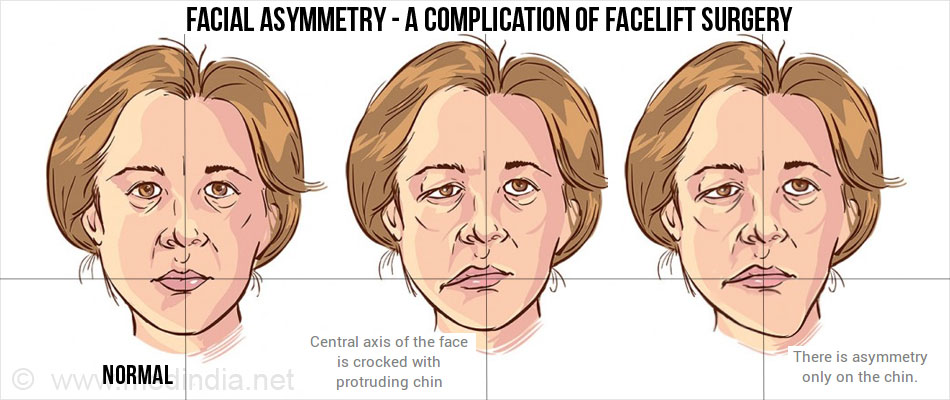
Facelift can be an expensive surgery and many will not able to afford a facelift procedure. If you are not able to afford the procedure, don’t despair after all many famous celebrities like Robert Redford and Marilyn Monroe refused a facelift. As Tom Wilson said ~
“A smile is a facelift that's in everyone's price range!”








